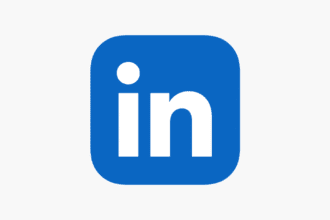Every click your ads get, every social media referral, every email open funnels visitors to your landing pages.
These crucial pages are often the last step before a conversion – whether it’s a lead form submission, a product purchase, or a download. But are they performing their best?
The answer often lies in A/B Testing Landing Pages.
This powerful methodology allows you to move beyond guesswork, systematically test different versions of your page elements, and make data-driven decisions to significantly improve your conversion rates.
For businesses in Nigeria, where every marketing Naira counts, optimizing your landing pages is paramount to maximizing your return on investment.
What Exactly is A/B Testing for Landing Pages?
At its core, A/B testing (also known as split testing) is a method of comparing two versions of a webpage or app element against each other to determine which one performs better.
Here’s how it works for landing pages:
- You create two (or more) variations of your page:
- Version A (the control): Your original landing page.
- Version B (the variant): A modified version where only one element has been changed (e.g., a different headline, a new button color, or a shorter form).
- Your website traffic is then split, with half of your visitors seeing Version A and the other half seeing Version B.
- A/B testing software tracks key metrics (like conversion rate, bounce rate, time on page) for both versions.
- After a statistically significant period, you analyze the data to see which version delivered superior results, indicating which change positively impacted user behavior.
This scientific approach allows you to pinpoint exactly what resonates with your audience and what doesn’t, leading to continuous, incremental improvements.
Why A/B Test Your Landing Pages? The Power of Data
For any business aiming for sustainable growth, especially in a competitive market like Nigeria, A/B testing landing pages is indispensable. Here’s why it’s so powerful:
- Boosts Conversion Rates: This is the primary goal. Even minor tweaks, when informed by data, can lead to significant increases in sign-ups, sales, or downloads.
- Reduces Guesswork: Instead of relying on intuition or “best practices,” A/B testing provides concrete data on what actually works for your specific audience.
- Maximizes ROI on Traffic: You invest time and money to drive traffic to your pages. A/B testing ensures that traffic is converting at its highest possible rate, meaning more value from every visitor.
- Uncovers User Preferences: By testing different elements, you gain invaluable insights into your audience’s preferences, pain points, and motivations. This understanding can inform your broader marketing and product strategies.
- Minimizes Risk: You can test new ideas on a segment of your audience before implementing them fully, mitigating the risk of negatively impacting your overall performance.
What Elements Should You A/B Test on Your Landing Pages?
Almost any element on your landing page can be a candidate for an A/B test.
The key is to test one variable at a time to isolate its impact. Here are common elements to consider for A/B testing landing pages:
- Headlines & Subheadings: Often the first thing visitors read. Test different value propositions, emotional appeals, or direct benefits.
- Call-to-Action (CTA) Text & Button Design: Experiment with action-oriented phrases (“Get My Free Guide,” “Shop Now”), button colors, sizes, and placement.
- Hero Images/Videos: Test different visuals that capture attention and convey your message.
- Body Copy: Experiment with different lengths, tones, benefit explanations, or social proof (testimonials, trust badges).
- Forms: Test the number of fields, field labels, placement, and any privacy assurances.
- Layout & Structure: Explore different arrangements of elements, column layouts, or navigation options.
- Offers: Test different incentives, pricing tiers, or trial periods.
How to Conduct an Effective A/B Test (Step-by-Step)
To run a successful A/B test on your landing pages, follow a structured approach:
- Define Your Goal (KPI): What specific action do you want visitors to take? (e.g., form submission, purchase completion, download). This is your Key Performance Indicator.
- Formulate a Hypothesis: Based on your research or intuition, what do you believe will happen? Example: “Changing the CTA button color from blue to green will increase conversions because green implies progress.”
- Choose a Single Variable to Test: This is crucial. Only change one element between Version A and Version B to accurately determine its impact.
- Create Your Variants (A and B): Implement the change for Version B. Ensure both versions are functionally identical apart from the tested variable.
- Use an A/B Testing Tool: Implement your test using specialized software (see below). This tool will split your traffic and track results automatically.
- Run the Test: Let the test run until you achieve statistical significance. This means you have enough data to be confident that the results are not due to random chance. The duration depends on your traffic volume and conversion rate.
- Analyze Results: Review the data. Which version performed better on your chosen KPI?
- Implement or Iterate: If a variant wins, implement it as your new control. If results are inconclusive, learn from them and formulate a new hypothesis for your next test.
Tools to Power Your A/B Testing Efforts
Several platforms can help you conduct A/B testing landing pages:
- Landing Page Builders with Built-in A/B Testing: Many popular landing page platforms like Unbounce, Leadpages, and Instapage offer integrated A/B testing capabilities, making it easy to set up and manage tests directly within their environment.
- Dedicated A/B Testing Platforms: Tools like VWO (Visual Website Optimizer) and Optimizely provide robust features for complex A/B, multivariate, and personalization tests across your entire website.
- Google Analytics 4 (GA4) with Google Tag Manager: While Google Optimize has been sunset, GA4, combined with Google Tag Manager, can still be used for certain types of content experiments if you have the technical expertise.
For Nigerian businesses, many of these platforms offer flexible pricing, making powerful optimization accessible regardless of budget size.
Key Takeaways for Successful Landing Page Optimization
- Start Small: Don’t try to revamp everything at once. Begin with high-impact elements like headlines or CTAs.
- Be Patient: Statistical significance takes time and traffic. Don’t stop a test too early.
- Focus on Your Audience: Every test is a conversation with your users. Listen to what their behavior tells you.
- Document Everything: Keep a record of your hypotheses, what you tested, the results, and what you learned. This builds a valuable knowledge base.
- Continuous Improvement: A/B testing is an ongoing process. There’s always room for further optimization.
Transform Your Conversions with Smart A/B Testing
In Nigeria’s competitive digital landscape, a well-optimized landing page can be the difference between a missed opportunity and a new customer. By embracing A/B testing landing pages, you empower your marketing efforts with actionable insights, transforming guesswork into data-driven decisions that consistently improve your conversion rates. Start experimenting today, and watch your business grow!






